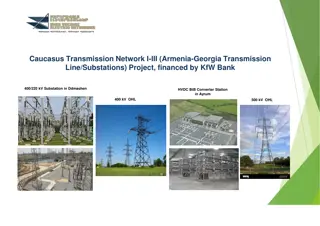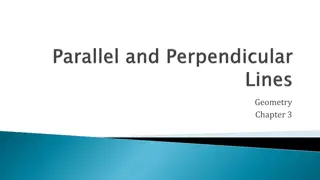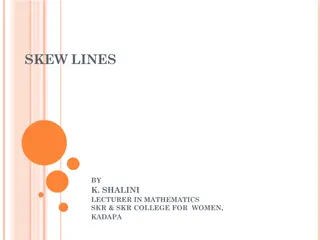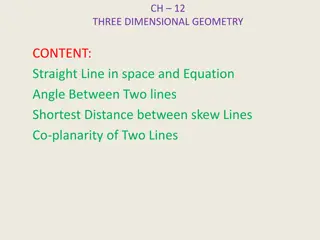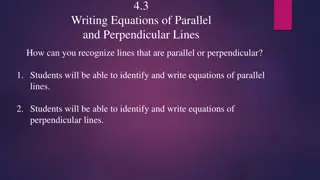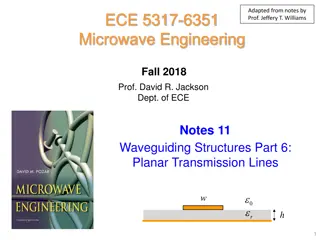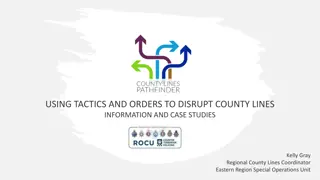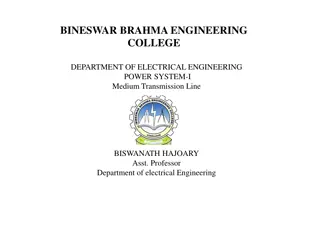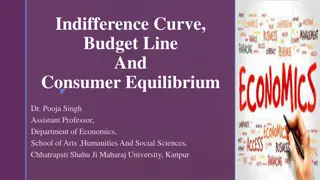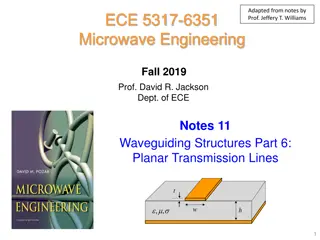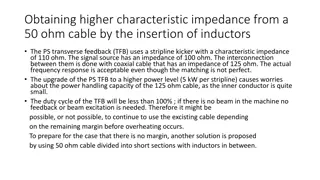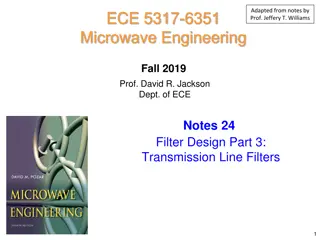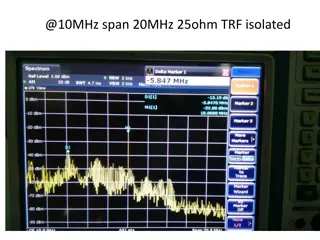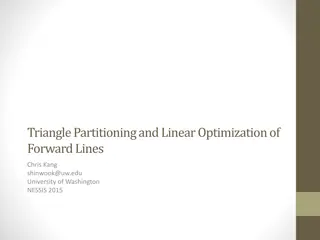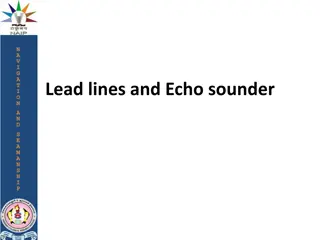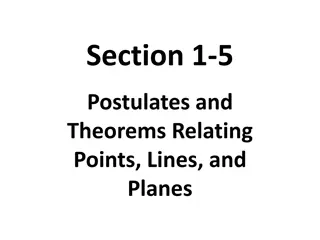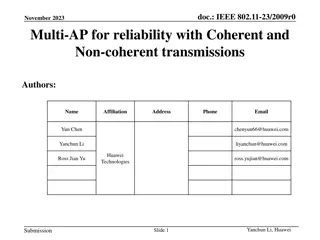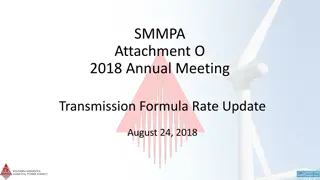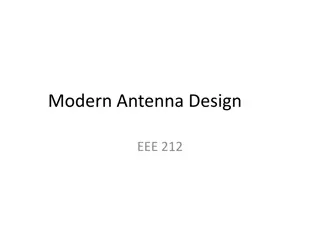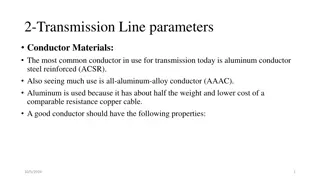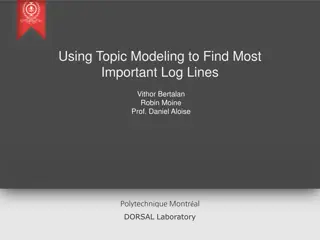Understanding Memory Units in Computing
Memory units are essential components in computing devices that store binary information in words, allowing for fast and efficient data retrieval. They consist of storage cells, circuits, and address selection lines for communication. Random Access Memory (RAM) enables quick access to data, while Re
6 views • 15 slides
TELECOMMUNICATIONS MEDIA
Telecommunications is the electronic transmission of information over distances, including voice calls, data, text, images, and video. It encompasses a range of technologies like fiber optics, satellites, telephones, and the Internet. Components of a telecommunications network include terminals, int
5 views • 13 slides
Caucasus Transmission Network I-III Project Overview
The Caucasus Transmission Network I-III Project aims to establish an asynchronous power connection between Georgia and Armenia, fostering reliable cross-border energy exchange and regional integration within the South Caucasus countries. The project involves the construction of substations, transmis
1 views • 7 slides
Comprehensive Overview of Geometry Chapter 3 Concepts
Dive into the fundamentals of lines, planes, parallelism, and angles in Geometry Chapter 3. Explore topics such as identifying lines and planes, understanding parallel and perpendicular lines, and recognizing angle relationships formed by transversals. Discover the properties of parallel lines, tran
0 views • 42 slides
Understanding Performance of Transmission Lines in Electrical Engineering
The performance of a transmission line in power systems is critical for efficient operation. Factors such as voltage drop, line losses, and transmission efficiency are key considerations in design and operation. The line parameters of resistance, inductance, capacitance, and shunt conductance play c
2 views • 26 slides
Enhancing Performance of EHV Lines through Series Compensation
Series compensation, involving connecting capacitors in series with electrical transmission lines, aims to improve EHV line performance by decreasing transmission impedance and enhancing voltage stability and transient stability. The method is a robust tool to optimize power transmission efficiency.
0 views • 51 slides
Understanding Transmission Modes in Computer Networks
Transmission modes in computer networks can be divided into serial and parallel modes. Parallel transmission allows multiple bits to be sent simultaneously over separate media, while serial transmission sends one bit at a time. The choice between serial and parallel transmission depends on factors s
0 views • 13 slides
Comprehensive Microwave Circuit Design Course Overview
This comprehensive course on Microwave Circuit Design by Professor Syed Idris Syed Hassan covers topics such as transmission lines, network parameters, matching techniques, power dividers, diode circuits, amplifiers, oscillators, filters design, and more. The syllabus includes lectures, simulations,
0 views • 49 slides
Understanding Skew Lines and Planes in 3D Geometry
Explore the concepts of skew lines, parallel lines, perpendicular lines, and planes in 3D geometry through real-life examples and equations. Learn about the shortest distance between skew lines and solve problems related to their applications.
1 views • 46 slides
Understanding Graphs of Straight Lines and Equations
Learn how to graph equations and find equations from graphs of straight lines. Explore tables of values, plotting points on a coordinate plane, drawing lines through points, and identifying relationships between graphs and algebraic expressions. Discover the gradient-intercept form of a straight lin
0 views • 14 slides
Geometry Learning - Lines of Symmetry Activities
Explore various activities focused on lines of symmetry in shapes. Engage in identifying symmetrical shapes, finding lines of symmetry through folding, sorting shapes based on symmetrical properties, drawing lines of symmetry, and reasoning about symmetrical shapes. Enhance your understanding of sym
0 views • 16 slides
Three-Dimensional Geometry: Direction Cosines and Angles
Understanding direction cosines and angles in three-dimensional geometry is crucial for determining the orientation of lines in space. By calculating direction cosines, we can find the angles a line makes with the positive directions of the X, Y, and Z axes. This knowledge helps in various geometric
0 views • 18 slides
Understanding Electric Field Lines and Charges
Electric field lines provide a visual representation of the electric field around charges. They show the direction of the electric field and help understand the intensity of the field at different points. Field lines never cross each other and the tangent at any point on a line gives the field direc
2 views • 40 slides
Understanding Parallel and Perpendicular Lines
Students will learn to identify and write equations of parallel and perpendicular lines by understanding the relationship between slopes. Parallel lines have the same slope, while perpendicular lines intersect to form right angles. Through examples and explanations, students will gain the skills to
0 views • 12 slides
Overview of Planar Transmission Lines in Microwave Engineering
This document details various types of planar transmission lines such as microstrip, stripline, coplanar waveguide, and slotline used in microwave engineering. It covers the characteristics, field structures for TEM mode, analysis methods, conformal mapping solutions, and considerations for effectiv
1 views • 25 slides
Using Tactics and Orders to Disrupt County Lines: Case Studies and Strategies
Exploring the approach of using tactics and orders to disrupt county lines, this content outlines the Drug Dealing Telecommunications Restriction Order (DDTRO) process and its impact on drug supply chains. Case studies like the successful DDTRO conducted by the North West Regional Organised Crime Un
0 views • 21 slides
Understanding Medium Transmission Line Capacitance Methods
Medium transmission lines, with lengths typically between 50-150 km and operating at voltages greater than 20 kV, require consideration of capacitance effects for accurate calculations. This article discusses key capacitance methods like the End Condenser Method and Nominal T Method, highlighting th
3 views • 22 slides
Understanding Indifference Curve, Budget Line, and Consumer Equilibrium
Indifference curves and budget lines are essential concepts in economics to analyze consumer behavior and preferences. Dr. Pooja Singh, an Assistant Professor at Chhatrapati Shahu Ji Maharaj University, Kanpur, explains how indifference curves represent different combinations of goods that offer the
0 views • 9 slides
Planar Transmission Lines: A Comprehensive Overview
Exploring various planar transmission lines like Microstrip, Stripline, Coplanar Waveguide, and Slotline. Understanding the field structures, analysis complexities, and solutions using conformal mapping in Stripline designs. Detailed discussions on characteristic impedance and effective width calcul
0 views • 24 slides
Understanding the Transmission of Viruses: Routes and Implications
Viruses are intracellular parasites that require transmission to a new host to evade immune responses. This transmission process, whether through respiratory droplets, fecal-oral routes, or sexual contact, is crucial in the viral life cycle. Different modes of transmission, such as horizontal and ve
0 views • 11 slides
Understanding Neurohumoural Transmission in Veterinary Pharmacology
Neurohumoural transmission in the field of veterinary pharmacology involves the communication of nerve messages through the release of chemical messengers. This process includes axonal conduction and junctional transmission. The historical aspects of neurohumoural transmission highlight key discover
5 views • 11 slides
Increasing Impedance with Inductors in Transmission Lines
The concept of increasing impedance in a transmission line using inductors is explored in this technical discussion. The use of inductors to raise the characteristic impedance of a cable is illustrated, along with considerations for cable division and filter types. The benefits of Chebyshev filters
0 views • 15 slides
Microwave Filter Design Using Transmission Lines
Explore the design of microwave filters using transmission lines, starting with lumped-element designs and transitioning to transmission line approximations. Learn how to realize series inductors and shunt capacitors using narrow and wide sections of microstrip lines. Discover techniques such as Ric
0 views • 28 slides
Frequency Response Analysis of Isolated Transmission Lines at Various Impedances and Frequencies
Explore the frequency response of isolated transmission lines at different impedances and frequencies, such as 25 ohms at 10MHz to 20MHz span, 50 ohms at 614MHz to 10MHz span, and more. Visual representations provided for in-depth analysis and understanding.
2 views • 4 slides
Understanding Regression Lines for Predicting English Scores
Learn how to utilize regression lines to predict English scores based on math scores, recognize the dangers of extrapolation, calculate and interpret residuals, and understand the significance of slope and y-intercept in regression analysis. Explore the process of making predictions using regression
0 views • 34 slides
Triangle Partitioning and Linear Optimization in Hockey Line Analysis
In this presentation, the speaker discusses the use of triangle partitioning and linear optimization techniques to analyze hockey team lines. The goal is to find chemistry between players, allocate ice time effectively, and match up against opposing lines for a better chance of winning games. Tradit
0 views • 16 slides
Understanding Warm Lines: A Vital Support System Beyond Crisis Intervention
In the realm of mental health support, warm lines serve as invaluable resources beyond crisis intervention hotlines. Originating in the late 1950s, these lines cater to individuals facing non-crisis challenges such as depression, loneliness, and relationship issues. Project Return Peer Support Netwo
0 views • 27 slides
Enhancing Transmission Infrastructure for Reliable and Efficient Energy Delivery
Interregional transmission plays a crucial role in ensuring energy reliability and cost efficiency, especially during extreme weather events. Connecting areas with diverse net load reduces costs and enables significant power transfers. Investing in bigger transmission lines leads to lower losses and
0 views • 9 slides
Understanding Fanno and Rayleigh Lines in Adiabatic Flow
Fanno and Rayleigh lines on the h-s diagram help in analyzing adiabatic flow with friction effects. The Fanno line represents frictional flow, while the Rayleigh line signifies non-adiabatic, frictionless flow. These lines aid in plotting flow properties and understanding phenomena like shock waves
0 views • 6 slides
Understanding Lead Lines and Echo Sounders for Depth Measurement
Dive into the world of lead lines and echo sounders for depth measurement. Discover the ancient navigational instrument, the construction of lead lines, and the markings used for different depths. Learn about the traditional use of lead lines by fishermen and the importance of these tools in shallow
0 views • 23 slides
Geometric Postulates and Theorems Relating Points, Lines, and Planes
This section introduces the postulates and theorems related to points, lines, and planes in geometry. It covers basic assumptions, postulates about lines and planes, and theorems about intersections. The concept of "exactly one" and "one and only one" is emphasized, highlighting the unique relations
0 views • 10 slides
Understanding Basic Geometrical Ideas in Geometry
Basic Geometrical Ideas in Geometry cover the fundamental concepts of points, lines, and planes. Points are described as having location but no size, lines are infinite sets of points, and collinearity is discussed. The importance of straightness in lines is assumed but not defined. Symbols and nota
0 views • 45 slides
Multi-AP for Reliable Wireless Transmission with Coherent and Non-coherent Technology
In this IEEE 802.11-23/2009r0 document, the concept of Multi-AP coordination is discussed to achieve Ultra High-reliability (UHR) goals. The use of both Coherent Joint Transmission (JT) and Non-coherent transmission technologies is explored for improved reliability and performance in wireless commun
0 views • 16 slides
SMMPA Annual Meeting Transmission Rate Update 2018
SMMPA, a not-for-profit political subdivision in Minnesota, updated its transmission rate formula in August 2018. The Attachment O timeline outlines crucial dates for stakeholders, including the annual meeting on formula rate updates. SMMPA, as a Transmission Owner in MISO, follows FERC-approved tem
0 views • 8 slides
Overview of Impedance and Reflection Coefficient in 1-Port Network Transmission Lines
Explore the fundamentals of 1-port networks, focusing on impedance, admittance, and reflection coefficient. This lecture from EEE 212 delves into the review of these key concepts essential for modern antenna design. Drawing insights from HP/Agilent Application Note 95-1, the discussion provides a fo
0 views • 140 slides
Proposed Amendments to GRIDCO Regulations for Transmission Charges
The proposed amendments to the CERC regulations aim to alleviate the burden of transmission charges on GRIDCO and consumers in Odisha. The amendments focus on the sharing of inter-state transmission charges and losses, including the substitution of LTA/MTOA with GNA for sharing transmission charges.
0 views • 7 slides
Types of Conductors in Transmission Lines
Aluminum conductors, such as AAC, AAAC, ACSR, and ACAR, are commonly used in transmission lines due to their high conductivity, tensile strength, light weight, and resistance to corrosion. AAC is known for its good conductivity but limited strength, while AAAC offers better mechanical strength and c
0 views • 17 slides
Electric Power Planning for Transmission Networks: Real Options Approach
The study explores evaluating the option value of expanding transmission lines using a Real Options approach. It involves DCOPF calculations to determine locational marginal prices (LMPs) and uses a Binomial Lattice to assess uncertain demand scenarios. The analysis includes adding new generators an
0 views • 30 slides
Utilizing Topic Modeling for Identifying Critical Log Lines in Research
By employing Topic Modeling, Vithor Bertalan, Robin Moine, and Prof. Daniel Aloise from Polytechnique Montréal's DORSAL Laboratory aim to extract essential log lines from a log parsing research. The process involves building a log parser, identifying important log lines and symptoms, and establishi
0 views • 18 slides
Preamble and PE Transmission in PPDU Using DRU
The document discusses the transmission of Preamble and Physical End with the DRU technology in PPDU for IEEE 802.11 networks. It covers various aspects such as legacy preamble, UHR-STF, UHR-LTF, PE fields, and SIG transmission. The focus is on achieving compatibility and performance efficiency in D
0 views • 13 slides


